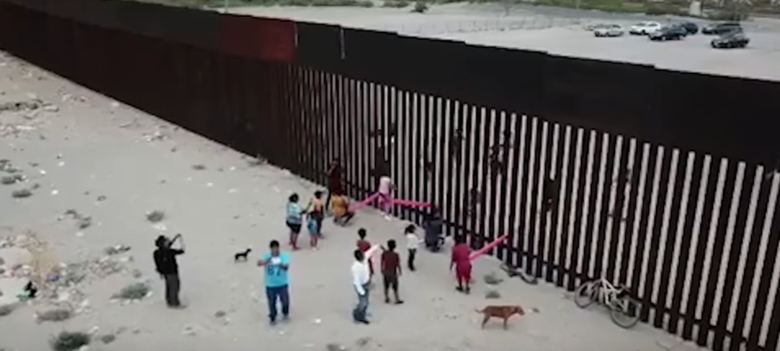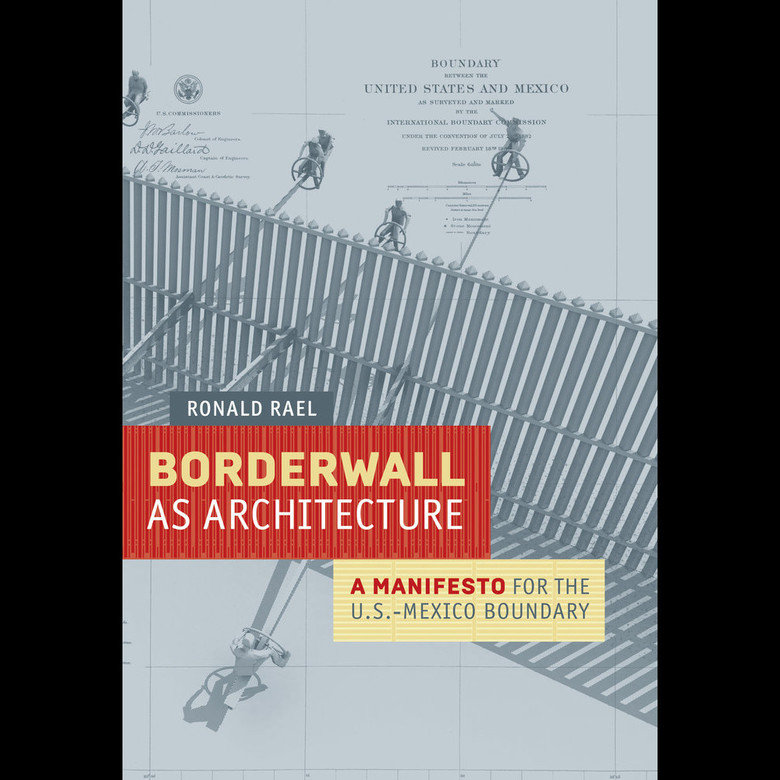Border Wall as Playground
John Hill
31. 七月 2019
Photo: Screenshot of Instagram video by Ronald Rael
Ronald Rael and Virginia San Fratello of Rael San Fratello have turned a small portion of the US-Mexico border into a literal playground with the installation of pink teeter totters that allow children — and adults — on both sides of the wall to play together.
The idea for the installation is ten years old, and is one of many speculative ideas that were compiled in Rael's 2017 book Borderwall as Architecture: A Manifesto for the U.S.-Mexico Boundary; it is the most striking of the lot, understandably making the book's cover (image at bottom).
With President Trump's ongoing border rhetoric and installation of "steel slat" barriers along parts of the border, the temporary teeter totter installation is both timely and site-specific. The playful pink color is the perfect contrast to the rust-colored border wall and has no doubt helped the installation go viral.
Description of the project from Ronald Rael's Instagram:
Cover of Ronald Rael's 2017 book Borderwall as Architecture: A Manifesto for the U.S.-Mexico Boundary (Image courtesy of University of California Press)
Ironically, the installation of teeter totters — or seesaws, as they're also known — at the border taps into broader issues of fear and safety. Seesaws have been removed from playgrounds in the United States over the last few decades in response to federal safety guidelines. To cite one example, only a few remained in New York City as of 2016 — or the same number as those inserted into the border wall in Sunland Park, New Mexico.
相关文章
-
Far Too Many
on 2023/12/11
-
The Canyon
on 2023/10/23
-
‘I Believe in the Present and the New’
on 2023/10/10
-
Vacancies by the Bay
on 2023/9/11
-
Larkin Substation Expansion
on 2022/7/18

